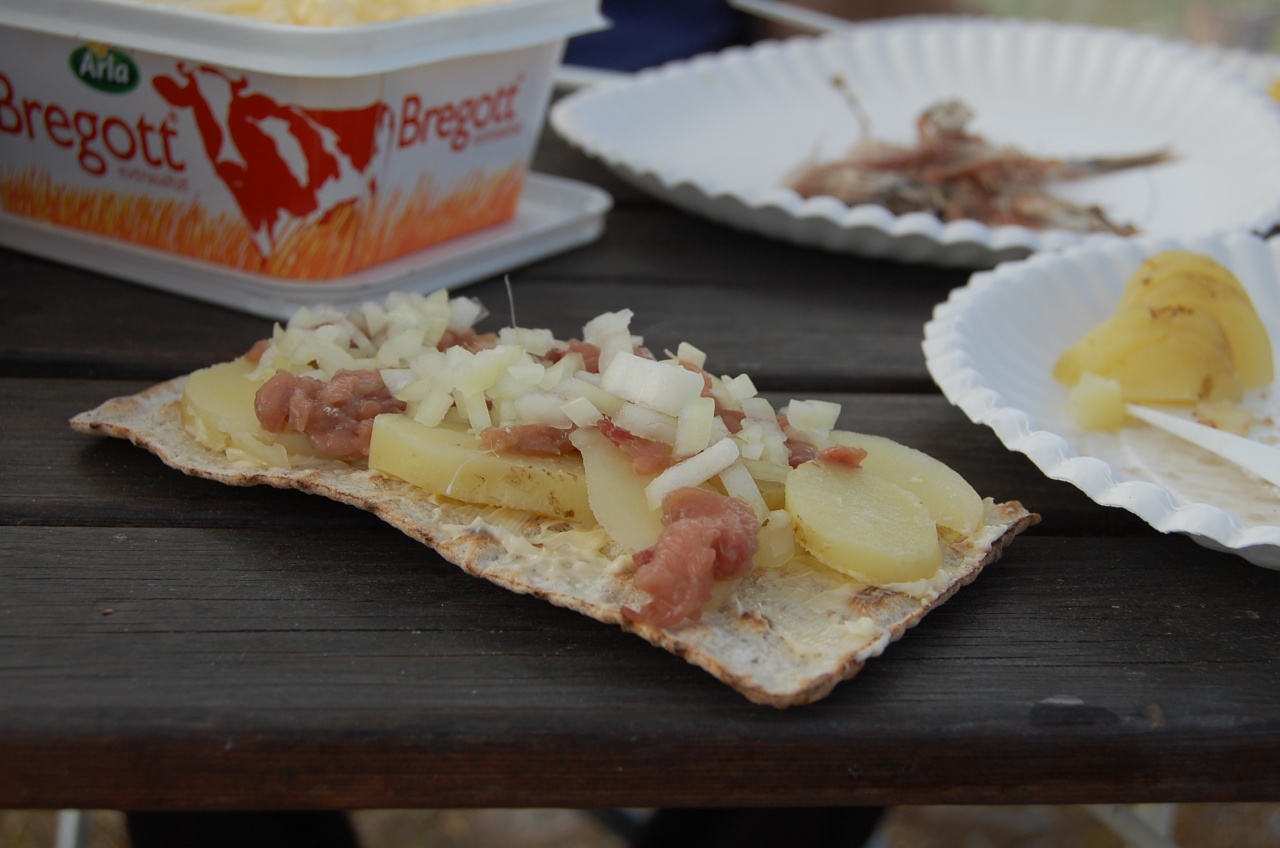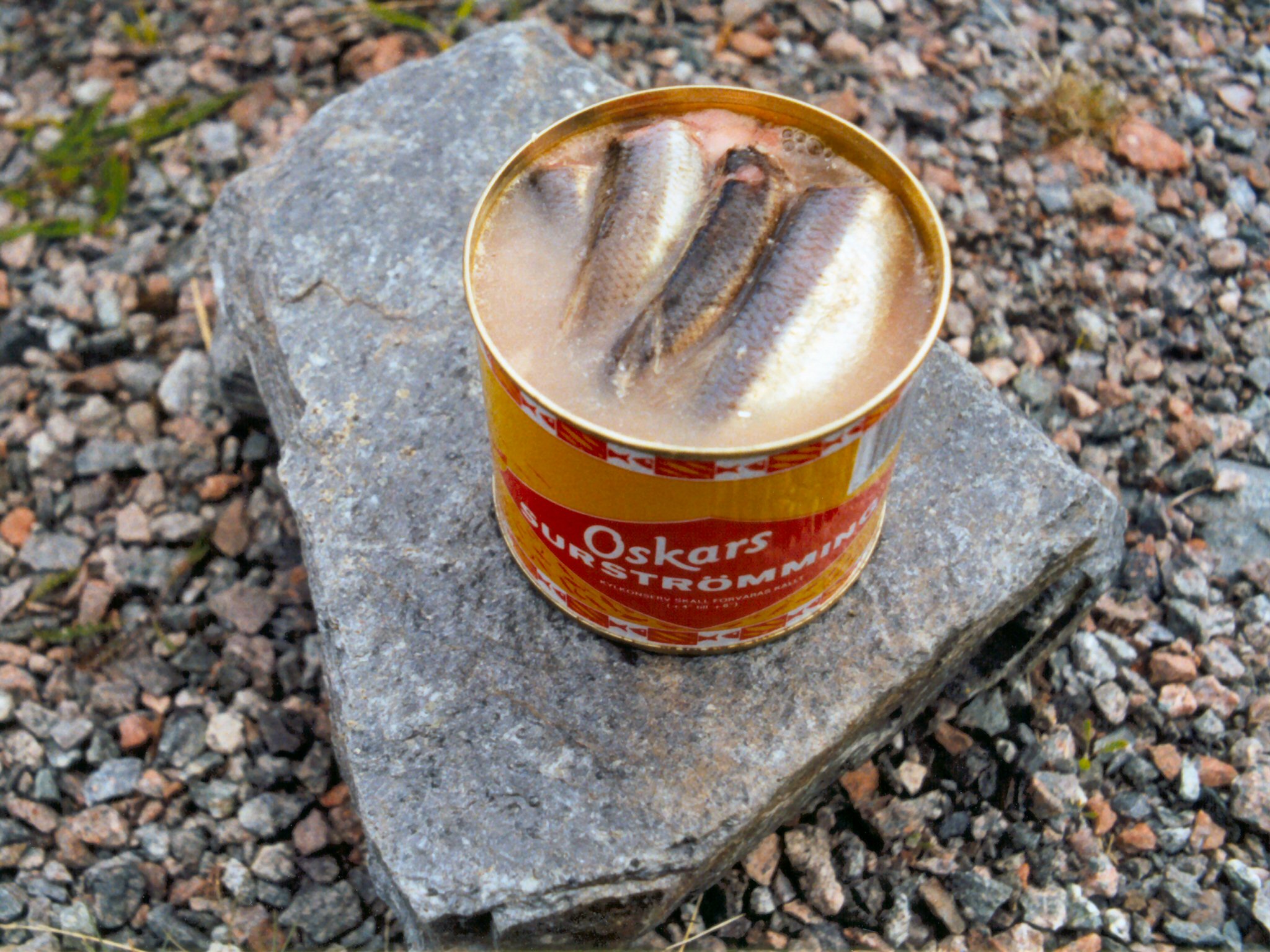Time for 'surstromming'
Move over crayfish! Time to throw out the crayfish paraphernalia ... today is the official first day, 'Surstrommingspremiaer' the fermented herring cans can finally be opened (if you dare).
-
 A “surströmmingsklämma." This is how "surströmming" (the fermented Swedish delicacy) is eaten in northern Sweden.
A “surströmmingsklämma." This is how "surströmming" (the fermented Swedish delicacy) is eaten in northern Sweden. -
-
Move over crayfish! Time to throw out the crayfish paraphernalia and take out the “surströmming.” The official premiere date for “surströmming” is the third Thursday in August. All countries in the world have their dreaded “delicacies” and in Sweden it is the salted and fermented Baltic herring. Long before it is due on the table, it is packed in hermetically sealed tins, in which the fermentation continues—just watch that tin swell at the top and bottom! Professor Jan-Öjvind Swahn on the history of The world's smelliest fish
-
 Life made Sweder ... News, fun, trivia and features from Sweden and Sweden in America. And a gift that will last for a long time: <a href="http://www.nordstjernan.com/subscribe">SUBSCRIBE to Nordstjernan</a> Whether for yourself or someone you love, it will last for as long as you'd like...
Life made Sweder ... News, fun, trivia and features from Sweden and Sweden in America. And a gift that will last for a long time: <a href="http://www.nordstjernan.com/subscribe">SUBSCRIBE to Nordstjernan</a> Whether for yourself or someone you love, it will last for as long as you'd like... -
-
Surströmming and "mandelpotatis" (almond potatoes) make a classic Swedish menu tradition. So how did it come about that we eat this horrid-smelling fish? One myth is that the dish originated with Swedish sailors in the 16th century. As they had only half the amount of salt needed to keep their fish fresh, it began to rot. The sailors came across some Finnish islanders and decided to con them by selling the rotten fish to them. The Finns bought it and the sailors went away. A year later the Swedish sailors returned to the island and the locals asked if they had more rotten fish. The sailors decided to try it themselves, liked it and made more.
-
 Thursday, August 17 is this year's official premiere of “surströmming” in Sweden.
Thursday, August 17 is this year's official premiere of “surströmming” in Sweden. -
Another, more likely true story, is that surströmming originated when brining food was expensive due to the cost of salt. When fermentation was used, just enough salt was required to keep the fish from rotting. Today, the Baltic herring used for surströmming is caught in spring, just as it is about to spawn. The herring is then fermented in barrels for a couple months, then tinned. Half a year later, as that tin is bulging, it is ready to eat; tins can be found in supermarkets all over the country. Certain airlines have banned these tins on their flights, however, as the pressurized containers are potentially dangerous.
-
Surströmming is often eaten with a kind of bread known as "tunnbröd" (thin bread). This is how the fish is consumed in the Höga Kusten area of northern Sweden and is commonly referred to as “surströmmingsklämma.” In the south, surströmming is more commonly eaten with a variety of condiments such as diced onion, sour cream ("gräddfil") or crème fraîche, chives and sometimes even tomato and chopped dill—not unlike how “matjessill” is eaten.
-
Have a snaps with your surströmming and don’t forget to pinch your nose!
-
-
-
